Mastering Cross-Channel Marketing for Unmatched ROI
Discover how cross-channel marketing strategies, including Connected TV and display ads, can enhance engagement and drive business growth. Uncover case studies and expert insights to maximize your marketing ROI.


Marketers today are constantly on the lookout for strategies that capture attention and deliver tangible results. Enter cross-channel marketing, a game-changer driving remarkable return on investment (ROI) for businesses around the globe. 53% of marketers in a Demandbase survey have ranked cross-channel integration as one of their top advertising trends. Let’s explore why cross-channel marketing is a crucial strategy for marketers, particularly in the B2B space, and how it can revolutionize your approach to customer engagement and ROI.
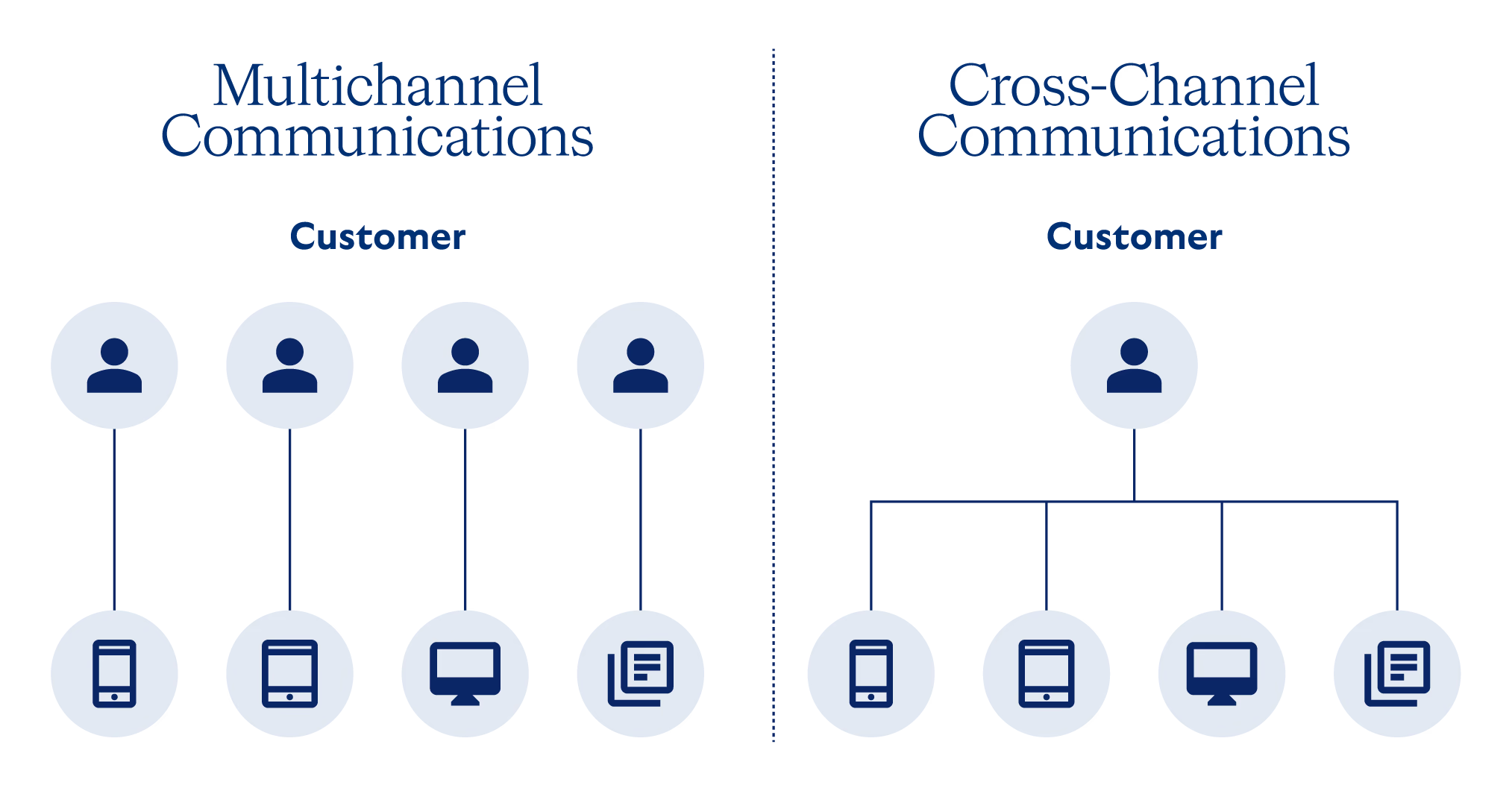
Understanding Cross-Channel Marketing
Cross-channel marketing is a strategy that seamlessly integrates various marketing channels to create a cohesive message. Unlike multichannel marketing, which uses several channels independently, cross-channel marketing ensures that these channels work together. This approach is crucial because customers frequently interact with brands across multiple platforms. By creating a unified experience, marketers can build stronger connections with their audience, leading to increased customer loyalty and higher conversion rates.
The significance of cross-channel marketing lies in its ability to provide a holistic view of the customer journey. By integrating data from different channels, marketers can gain valuable insights into customer behavior and preferences. This information can be used to personalize marketing messages, improve targeting, and optimize campaigns for better results. In a world where consumers are bombarded with marketing messages, cross-channel marketing helps brands cut through the noise and deliver relevant content that resonates with their audience.
In essence, cross-channel marketing is about delivering the right message, to the right person, at the right time. It’s about creating a seamless experience that meets the needs and expectations of today’s consumers. For marketers, mastering cross-channel marketing is no longer optional; it’s a necessity for staying competitive in a rapidly evolving digital landscape.
The Rise of Connected TV Advertising
Connected TV (CTV) is transforming the way brands engage with audiences, making it a key player in cross-channel marketing strategies. U.S. ad spending on CTV is expected to hit $42.4 billion by 2027, accounting for 51.5% of all TV ad revenue by 2029. Why the surge? CTV offers personalized content delivery, enhancing audience engagement through targeted video campaigns.
CTV allows marketers to reach highly engaged audiences with precision. Unlike traditional TV advertising, which often casts a wide net, CTV ads can be tailored to specific demographics, interests, and behaviors. This means brands can deliver relevant content that aligns with viewers’ preferences, increasing the likelihood of conversion. The ability to target high-intent prospects makes CTV a powerful tool for driving results.
“By leveraging CTV, we're able to create video campaigns that resonate with our highest intent prospects, delivering personalized content that aligns with where they are in the buying journey.”
This level of personalization not only enhances engagement but also strengthens brand loyalty by providing viewers with content that meets their needs and interests.
Impact of Cross-Channel Integration
Combining CTV with other channels amplifies marketing efforts, delivering impressive results. Demandbase customers have seen a 46% increase in domains visited and a 54% rise in clicks by integrating CTV and display ads. The data is clear—cross-channel integration boosts engagement and reduces costs.
When different channels work together, marketers can create a more comprehensive and engaging customer experience. For example, pairing CTV with display ads allows brands to reinforce their message across multiple touchpoints, increasing the chances of conversion. This integrated approach ensures that customers receive consistent messaging, regardless of the channel they interact with.
Cross-channel integration also provides valuable insights into customer behavior. By analyzing data from various channels, marketers can identify patterns and trends that inform future campaigns. This data-driven approach enables brands to make informed decisions, optimize strategies, and ultimately achieve better ROI.
Cross-channel integration is not just a trend; it’s a strategic imperative for maximizing engagement and driving business growth.
Cross-channel Campaign Insights
Understanding the nuances of each platform and how they can complement each other is key to successful cross-channel marketing. Display ads, in particular, have proven to be effective at every stage of the buyer’s journey. When integrated with other channels, they drive higher engagement and lower costs.
Display Ads in Cross-channel Campaigns
Display ads are a versatile tool that can enhance engagement at every stage of the buyer’s journey. Demandbase tests have shown that pairing display ads with other channels consistently improves engagement and lowers costs. Whether it’s awareness, consideration, or conversion, display ads play a crucial role in guiding prospects through the funnel.
At the awareness stage, display ads can introduce new customers to your brand by showcasing your products and services. These ads can capture attention and generate interest, setting the stage for further engagement. During the consideration phase, display ads can provide valuable information and comparisons that help prospects make informed decisions. Finally, display ads can encourage action at the conversion stage by offering promotions or discounts to incentivize purchases.
The versatility of display ads makes them an essential component of any cross-channel strategy. By leveraging display ads alongside other tactics, marketers can create a cohesive and effective customer experience.
Case Study 1: LinkedIn Ads + Display Ads
An A/B test combining LinkedIn and display ads resulted in a 50% increase in clicks, 35% more engagement, and a 30% higher CTR. This synergy demonstrates the power of integrating social media with display advertising to achieve better results.
By combining LinkedIn ads with display ads, marketers can reinforce their message and reach potential clients across multiple touch points. This integrated approach ensures that prospects receive consistent messaging, increasing the chances of conversion.
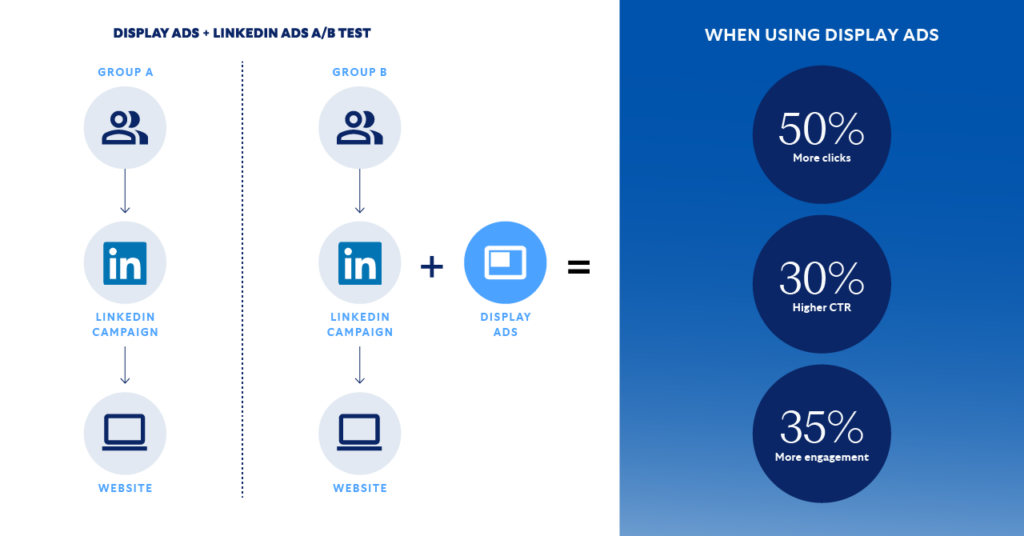
Case Study 2: Google Ads + Display Ads
Testing display ads alongside Google Ads led to a 7x increase in attributed pipeline and a 12.5x influence on closed/won revenue. This combination shows the significant impact of integrating search and display advertising for enhanced ROI.
By combining Google Ads with display ads, marketers can create a seamless experience that guides prospects through the buyer’s journey.
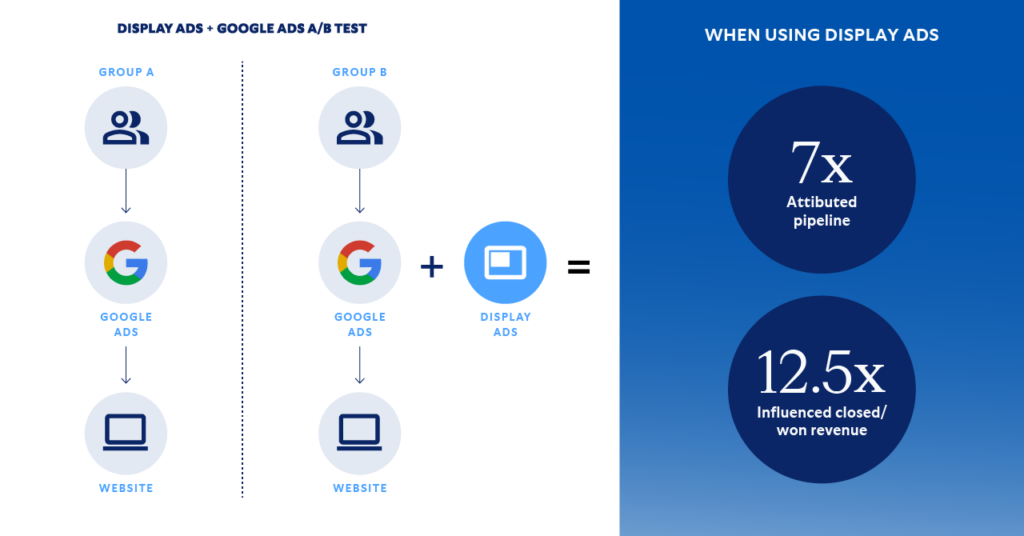
Case Study 3: Email Campaigns + Display Ads
Integrating display ads with email campaigns yielded a 5.7x increase in pipeline per account and a 5.4x increase in revenue per account. This success story underscores the role of display ads in boosting conversion rates and accelerating the buyer’s progression.
By integrating display ads with email campaigns, marketers can reinforce their message and drive action.
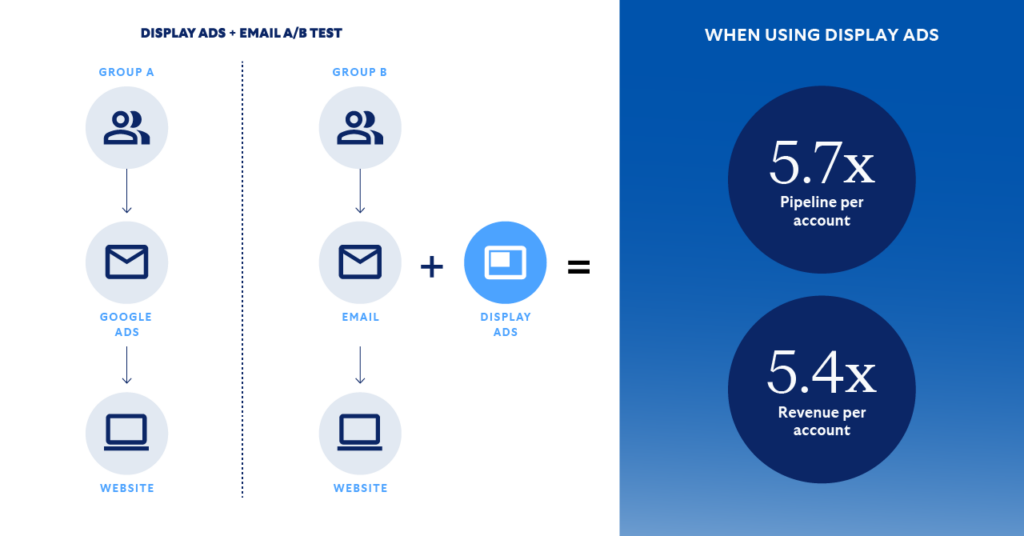
Final Thoughts and Strategic Insights
Cross-channel marketing is not just a trend; it’s a necessity for businesses aiming to stay competitive. By integrating platforms like CTV, display ads, and social media, marketers can enhance customer experiences and drive unmatched ROI. The case studies and insights shared in this blog highlight the potential of cross-channel strategies to transform your marketing efforts.
For marketing professionals looking to leverage these strategies, the next step is to analyze current campaigns for integration opportunities. Experimenting with CTV advertising and other cross-channel tactics can unlock new levels of engagement and success.
The future of marketing lies in cross-channel strategies. By harnessing the power of integration, businesses can create cohesive, impactful campaigns that resonate with their audience, driving both engagement and ROI to new heights.
Ready to elevate your marketing game? Don’t miss out on even more invaluable insights and strategies that can transform your advertising approach. Download the State of B2B Advertising report to unlock the trends and data driving the future of B2B. Click the link below to gain exclusive access and stay ahead in the competitive landscape.
Download the full report now and start maximizing your ROI today!

Related content
